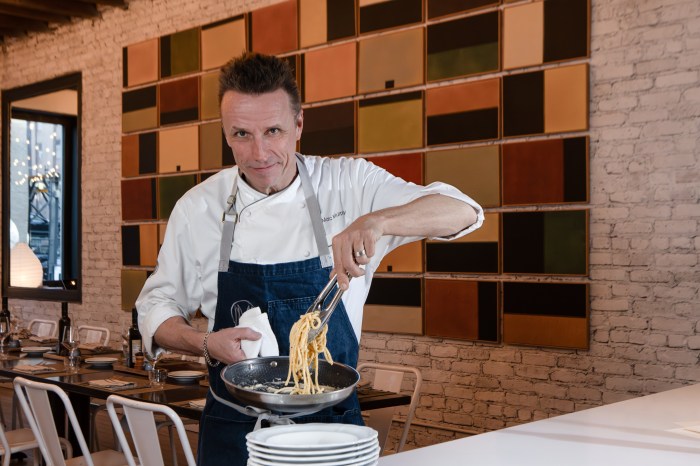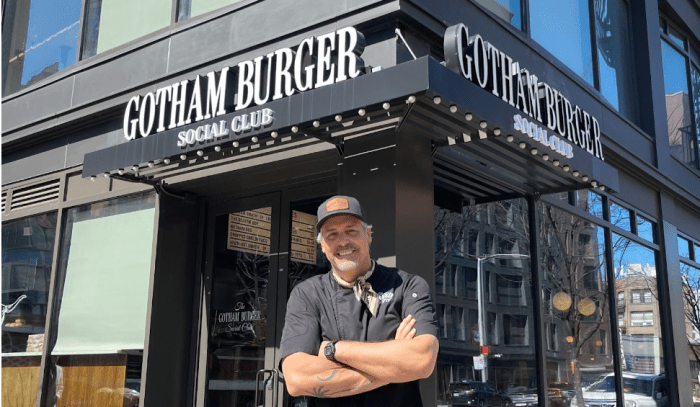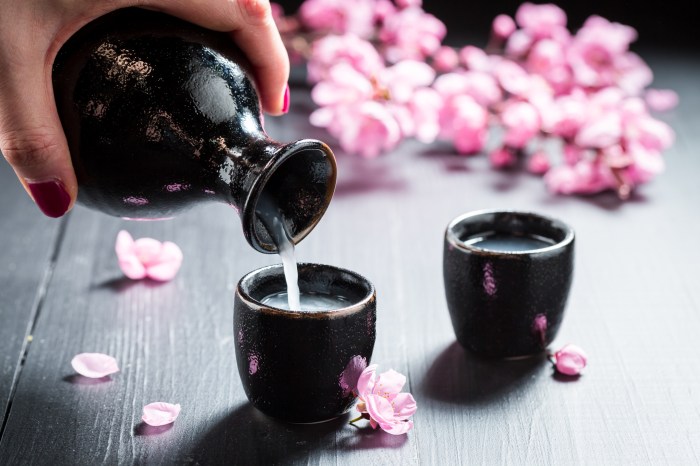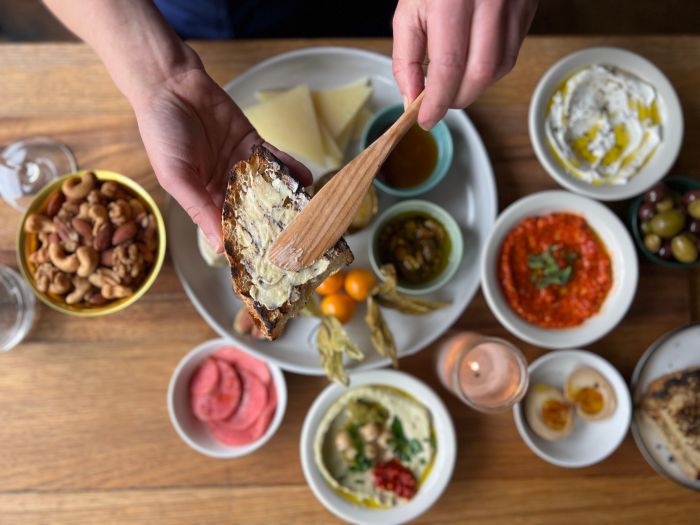
Whether or not you’re familiar with Laotian cuisine, it’s likely you’ve tried it at some point. A lot of Laotian dishes in the United States are actually sold in Thai restaurants, often without being labeled as such.
Though Laotian food may not seem as common in New York City — just 664 Laotian live locally, according to 2010 U.S. Census data — dishes from the small Southeast Asian nation can be found in restaurants specializing in Isan Thai food. Take pad kee mao, for example. The ubiquitous spicy “drunken” noodles have been popularized as an iconic Thai dish, but it has Laotian roots.
The neighboring nations — Thailand covers the bulk of Laos’ western border — share a lot of culinary and cultural similarities. Laos is like the “country cousin” to Thailand, according to chef Soulayphet Schwader of Khe-Yo in TriBeCa, and because the Thai tongue is more formal, “Thai culture is taking credit for a lot of dishes that are considered truly Laotian.”
Laos, which also borders Vietnam and Cambodia, has a population of 6.86 million, which is actually smaller than the number of Laotians living in Thailand, especially in the northeast region of Isan. Located on the Khorat Plateau on one side of the Mekong River, Isan comprises several ethnicities including Lao, Vietnamese and Khmer groups, and there are about 20 million Lao Isan people in all of Thailand.
Historically, Isan was part of a Laotian kingdom until the Franco-Siamese War in the late 1800s turned the Khorat Plateau and Mekong River into a border that splits Thailand and Laos. Then, the Thaification policy in the 1900s led to the ethnic integration of Isan people into the Thai nationality. So while technically Isan is a Thai region today, there are still lots of Laotian people, as well as food, culture and influence, in the area.
“Even to this day, you go up to Isan, (and) they speak Laotian; they eat Laotian food,” Schwader says.

Laotian cuisine, ‘very much a unique experience’
Thai food fanatics may be aware of what’s usually on the menu at an Isan Thai place, but even they may not realize that many of the dishes are tied to or were invented in Laos.
Though the two cuisines seem similar, Laotian cuisine is “very much a unique experience,” says Deth Khaiaphone, a Laos-born pastry chef consultant at La Vie and P14 in Washington, D.C.
“It’s vibrant, complex, packed with herbs, with spice and bitterness, and made distinctive because the primary base seasoning in Lao food is padaek,” a fermented fish sauce marinated in salt and rice husks that is key to Laotian cuisine, Khaiaphone notes.
Along with padaek, sticky rice is a national food staple that accompanies virtually all Laotian dishes. The type of rice really differentiates Laotian and Thai dining experiences — sticky rice for Laotian meals and jasmine rice for Thai.
“What makes Laotian cuisine unique to me is we just identify with sticky rice,” Schwader says. “Breakfast, lunch, dinner — it’s typically sticky rice.”
Schwader emphasizes the importance of the sticky rice’s presence on his tables at Khe-Yo, as it completes a truly Laotian meal. Every table at his restaurant gets a complimentary bowl of sticky rice and sauces, no matter what a customer orders.
“It’s our bread and butter. It’s like the bread basket in Italian restaurants.”

Iconic dishes
One iconic Lao dish at Khe-Yo is the papaya salad, which has been popularized as an Isan Thai dish but was invented in Laos. Called somtum in Thai and tum mak hoong in Lao, the salad is made with julienned papaya marinated in fish sauce and mixed with cilantro, peanuts and carrots — and oftentimes made very spicy. At Khe-Yo, it’s served with green market cabbage and pork rinds and doused with padaek, which Schwader calls “the funk,” for $15.
Somtum Der, an Isan Thai hot spot in the East Village that used to have a Michelin star, also has many variations of the papaya salad, in both Laotian and Thai styles. Tum poo plara, for instance, has padaek — also known as plara in Thai — and field crabs; tum pla too and kai mun comes with coconut rice and Thai mackerel; and tum kor moo yang is made with grilled pork neck meat. The papaya salads here range $11 to $16.
Laap, or larb, is another popular dish that has origins in Laos but is often sold in Isan Thai restaurants. The meat salad is typically made with ground chicken, beef or pork, fish sauce and herbs, and it eaten with sticky rice in Laos.
Khaiaphone says laap is a good first dish for those who have never had Laotian food. It’s a widely available dish and comes in many different varieties.
“In our household, we add cow bile (yes, we waste nothing!) to beef laap to add a bitter taste to the dish,” he says.
Khe-Yo’s Schwader also recommends his restaurant’s laap, which comes with Bell & Evans chicken and fresh herbs for $16. He adds that the crunchy coconut rice, another traditional Laotian dish, is a bestseller and is served with spicy lime leaf sausage for $15.
Isan Thai places tend to feature a type of laap on their menus, including Somtum Der, which has nine different kinds that go for $11 to $15. Among those, nam took moo — made with grilled minced pork — is a dish that is also a part of Laotian cuisine.
Another Isan Thai restaurant, Hug Esan in Elmhurst, Queens, offers laap in four options: beef, pork, pork liver and bamboo, which all come with mint, shallots and chili lime dressing for $7.

And make it spicy
Although many of these foods can be labeled as Thai or Laotian, Schwader wants it to be known that what makes the dish purely Laotian is the way it is prepared.
He uses the papaya salad as an example. Right on the border of Laos and Thailand in Nong Khai, if a customer orders papaya salad, the server will ask if they want it Laotian or Thai style. Schwader emphasizes that Laotian style will have the padaek and be made very spicy — there’s no customizing the spice level here.
The same goes for tom kha, a coconut milk soup often made with kaffir lime leaves, lemongrass and mushrooms. But the addition of dill weed makes the soup Laotian.
“That, to me, is what distinguishes Laotian food — the way we use certain ingredients to make a dish,” he says.
Khaiaphone also notes that the spiciness separates the two cuisines. “Lao cuisine is often much more spicy, whereas Thai food often tends to be sweeter.”

Lao and the city
In NYC, Schwader’s Khe-Yo, co-helmed by Iron Chef Marc Forgione, may be the only restaurant marketed as pure Laotian. The reason why Laotian spots are hard to find in the city is that a lot of Laotian people opening up restaurants in the United States have thought classifying their eateries as Thai would draw in more customers, given the familiarity and popularity of Thai food.
“There are many Laotian people who open Thai restaurants in order to ensure that they will get people into their establishments by selling what is known,” Khaiaphone says.
But breaking from the status quo, Schwader sticks to this Laotian style and won’t deviate from the traditional recipes he learned from his mom and his visits to Laos. Unlike others, he’s not afraid to refuse to cater to other demographics of NYC who may be less familiar with or acclimated to Laotian flavors and spices.
“This is Lao, the way we make it,” Schwader says. “I’m not going to make everybody happy with my food. I just want to make the food that I identify with.”
Having been in the shadow of Thai food, which has seen a surge in authentic interpretations in the U.S. in recent years, Laotian dishes are starting to get the spotlight as a separate cuisine.
“Lao food has had a low profile for decades despite the migration of Lao people both within Asia and outside to the U.S. and Europe, but Lao cuisine is now being known because Lao chefs have started showcasing our own cuisine,” Khaiaphone says.
And Schwader encourages chefs aspiring to sell Laotian food to serve exactly that — purely Laotian cuisine. “Not Thai, not Vietnamese, whatever,” he says.
LAOTIAN RESTAURANTS
Khe-Yo: 157 Duane St. (TriBeCa), kheyo.com
Pho Thai Lao Kitchen: 219 Maywood Ave. (Maywood, NJ), phothailaokitchen.com
ISAN THAI RESTAURANTS
Somtum Der: 85 Avenue A (East Village), somtumder.com
Sticky Rice: 85 Orchard St. (Lower East Side), stickyriceles.com
Lan Larb: 637 2nd Ave. (Murray Hill) and 227 Centre St. (SoHo)
Chao Thai: 85-03 Whitney Ave. (Elmhurst, Queens)
Hug Esan: 77-16 Woodside Ave. (Elmhurst), hugesannyc.com

















